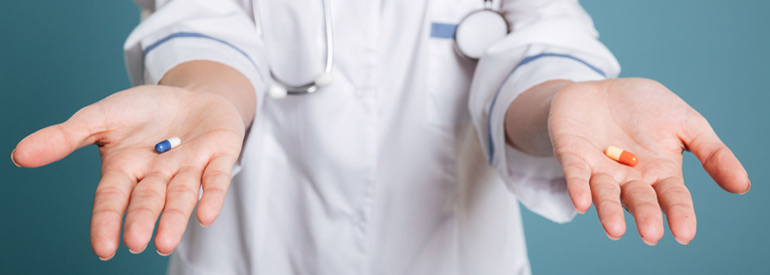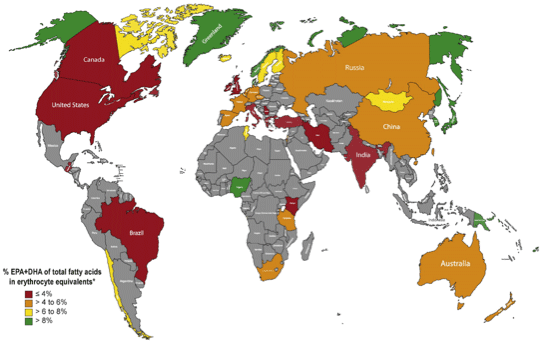
Dietary Supplements: new evidence for making the best choices


The biological activity of dietary supplements:
“Do not use dietary supplements as a substitute for a varied and balanced diet, in a healthy and active lifestyle context. Remember that a dietary supplement cannot “compensate” for bad habits. ” (from the Decalogue of the Ministry of Health) (1)
The assertion that no multivitamin or supplement can replace the health effect of a balanced diet is confirmed, among others, by a recent prospective cohort study of over 30,000 people conducted for about 11 years in the United States (2).
Food supplements are substances that, as the name suggests, supplement normal nutrition with a nutritional or physiological effects. This category also includes nutraceuticals, products that contain substances present in food, appropriately dosed, concentrated and purified, in order to offer specific health benefits.
The standard diet of modern man
The modern Western diet, among the various negative elements, is providing excess calories (simple sugars, animal proteins, saturated fatty acids and refined oils) on the one hand and micronutrient deficiencies on the other. An increase in the incidence of overweight and obesity is therefore observed, even in the presence of cases of malnutrition.
In this scenario, diets that are unbalanced and far from the famous reference of the Harvard school’s healthy dish, we are witnessing a paradoxical growth in the consumption of supplements and nutraceuticals, with the idea of compensating for incorrect dietary habits. According to US Consumer Survey on Dietary Supplements (2018) data, 75% of American adults use supplements and a large part of them to ensure the nutrients they need.
Omega 3 levels in the population
Among the nutrients at risk of deficiency are the essential fatty acids of the Omega 3 series and in particular those with a long chain EPA (eicosapentaenoic acid) and DHA (docosahexaenoic acid), which presence in the body depends exclusively on food sources.
Remember that essential means a nutrient that must necessarily be introduced with the diet because the body is unable to synthesize it independently.
Figure 1: in the cartography of this study (3) the blood levels of EPA + DHA related to their presence in human plasma (triglycerides or phospholipids), whole blood and erythrocytes are grouped together. The lowest levels of omega 3 are found in U.S.A., in Central and South America, in parts of Europe, Asia and Africa. Higher values of LC Omega 3 are observed in Eastern countries from the Japanese sea site, in the Scandinavian countries, in Alaska and in the regions where the indigenous populations have not adopted a Western food style.
Some insights on the role of Omega-3:
DHA: essential fatty acid
Synergy and personalization: the lipidomic nutraceuticals
Main critical points of the integrators
If a product is natural it does not mean that it is healthy regardless or that it is free of side effects.
- assumptions of excess quantities, which exceed the tolerable upper intake level;
- poor bioavailability of the principle we want to integrate;
- presence of unwanted substances with possible side effects.
Regarding this last point, the US the Food and Drug Administration (FDA) recently warned of the unwanted presence of pharmacological substances in 776 food supplements. These substances include: steroids for muscle growth, anorectic drugs for weight loss and other pharmacological active ingredients for erectile dysfunction (4).
“One size doesn’t fit all”
The recent automation of molecular analytical techniques has paved the way to the customization of interventions, whether they are pharmacological, nutritional, integration or nutraceutical. For supplements it is important to consider, among other things, the bioavailability (molecular shape, presence of cofactors, etc.), the quantity and methods of intake and also the quality of the raw material.
It would be desirable to prescribe fatty acid supplements, after a careful dietary history and, if possible, an assessment of individual nutritional status by a health professional.
For a specific qualitative-quantitative analysis of the fatty acids that make up cellular membranes, there is the possibility of performing the lipidomics test with standardized methods (FAT PROFILE, fatpharmacy) in a metabolic-nutritional reading key. With this molecular medicine exam, useful information is obtained to restore the balance of erythrocyte cell membranes, through integration and personalized nutrition.
Critical aspects of omega 3 supplements
In the Italian reference standards for nutrition (LARN), with regard to fats to be considered, it is specified to keep the presence of saturated fatty acids low (SFA <10% total energy) and to eliminate trans fatty acids from the diet. The reference target for ALA is from 0.2 to 5% of the total energy, while for EPA and DHA it is 250 mg. It seems obvious that these criteria must also be taken into account for integrators.
The certification on a voluntary basis called IFOS can be useful as a guarantee of product quality, even if not indispensable. It is an independent organization, specialized in the analysis of omega 3-based products and which, after careful analysis, certifies their purity. Since the food matrix of omega 3 supplements are fish species oil (fish, crustaceans, algae), this by its nature may be subject to the presence of pollutants present in the seas or xenobiotics of fish farms.
Let’s see some products regularly on the market through the critical reading of his label.
| Percentage of omega 3 | Type of omega3 | Other fatty acids | Presence of antioxidants | Presence of co-factors | |
| SUPPLEMENT A | 53% | EPA-DHA ratio:1,5;
other ALAs |
of which saturated fatty acids 6.8% | Vit. E, Vit. C, Astaxantina | Alfa-GPC |
| SUPPLEMENT B | 75% | EPA-DHA
ratio:1,0; other omega3 not defined |
not specified, 25% of other fatty acids | not indicated | not indicated |
| SUPPLEMENT C | 35% | EPA-DHA
ratio:1,7; other DPA, ALA |
not specified, 65% of other fatty acids | Vit. E | not indicated |
| SUPPLEMENT D | 43% | EPA DHA ratio:1,5
|
not specified, 58% of other fatty acids | not indicated | not indicated |
The table shows, by way of example, the compositions of four omega-3 supplements for free sale, contained within the single capsule.
The contents of saturated fatty acids are rarely reported on the label and, in our sample of products, only one clearly indicates this. In other cases it can be assumed that the main component not indicated is monounsaturated fatty acids, saturated fatty acids, and a small part of omega 6. Remember that the intake of saturated fatty acids should be low and knowing its content would be extremely useful information for the consumer. Unfortunately, it is a fact that is almost never declared in this type of products.
The presence of any antioxidants and cofactors represents an advantage for the stability of the product and to encourage the incorporation into the cell membranes of omega 3, a fundamental condition to make them functional. This peculiarity has been found only in product A.
The toxicity of trans fatty acids and their deleterious effect on health is scientifically known. Since trans-isomerization is a reaction involving double bonds, even polyunsaturated fatty acids (PUFAs) under certain conditions can potentially contain them. Noteworthy is a study conducted on Omega 3 supplements that found the presence of EPA trans in fish oil products that underwent deodorization (5). The destiny of these compounds is forming phospholipids and in this study the trans fatty acids were found in the mitochondrial membranes of the liver, causing dysregulations of organ functions in animal models.
Personalized integration
Even at the molecular level it is possible to verify that one size doesn’t fit all and that for example, a person might need DHA and not EPA, or GLA (a fatty acid from the Omega-6 series), or even from ALA to restore the right ratio Omega-6 / Omega-3, SFA / MUFA, etc.
In molecular terms, the choice of fatty acid supplements must be made in order to obtain the membrane balance. This level of detail can be verified by examining the lipidomics.
Positive health effects of omega-3
The beneficial effects of these fatty acids are many, being precisely the main constituents of the cellular membranes and characterizing some tissues, such as the nervous and retina, play a fundamental role in the growth and neurodevelopment phases. We must not forget that our cells are subjected to continuous replacement and therefore the contributions of these essential nutrients must never be lacking not only in growth, but also in all stages of life.
Nutritional Claims
The European food safety authority EFSA, through its expert panels, has validated claims or health claims that can be used for omega-3:
ALA: contributes to the normalization of circulating cholesterol levels;
DHA: contributes to the maintenance of normal vision.
EPA and DHA: contribute to the maintenance of brain function, normal triglyceride values, blood pressure and cardiac function.
The advice of the pharmacist and nutritionist biologist for the choice of the omega-3 supplement
- avoid DIY (do it yourself) or advice from friend and family or even information found on the internet;
- Be wary of miracle products, well that goes are useless
- check the ingredients on the label;
- do not follow only the price criterion when choosing the product;
- rely on the indications of qualified health personnel;
- remember that the dosage must be personalized;
- rely on official sales channels;
- if in doubt, check that the product is registered with the Ministry of Health.
Bibliography
(1) http://www.salute.gov.it/imgs/C_17_opuscoliPoster_191_allegato.pdf
(2) Chen F. Association Among Dietary Supplement Use, Nutrient Intake, and Mortality Among U.S. Adults: A Cohort Study. Ann Intern Med. 2019 Apr
(3) Stark KD et al. Global survey of the omega-3 fatty acids, docosahexaenoic acid and eicosapentaenoic acid in the blood stream of healthy adults. Progress in Lipid Research 2016
(4) Unapproved Pharmaceutical Ingredients Included in Dietary Supplements Associated with US Food and Drug Administration Warnings. JAMA Netw Open. 2018;1(6)
(5) Ferreri C. et al. Trans fatty acids: chemical synthesis of eicosapentaenoic acid isomers and detection in rats fed a deodorized fish oil diet. Chem Res Toxicol. 2012 Mar 19;25(3):687-94.
Article by:
Francesco Bonucci – Nutrizionist
Dr.ssa Federica Oreglia – Pharmacist
The diet advise, written in the article, are not intended to be a substitute for a personal nutrition plan and should be adapted to specific cases
Foto: 75023421 ©Dean Drobot /123rf.com
- On 17 May 2019




